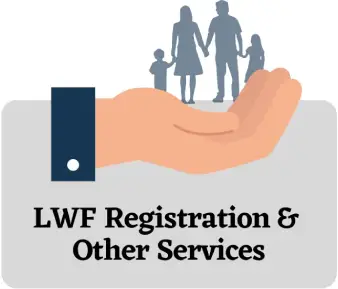What are the Benefits of LWF Registration in India?
Improved Working Conditions
One of the major benefits of labor welfare fund registration is that it leads to improved working conditions for employees. This includes better facilities, safer working environments, and a higher level of job security.
Employee Retention
Registering with the labor welfare fund can also help in retaining employees. Offering benefits like healthcare and insurance can make employees feel valued and help in improving their loyalty towards the organization.
Compliance with Legal Requirements
By registering with the labour welfare fund, employers can ensure that they are complying with the legal requirements of the state. This can help in avoiding legal issues and penalties in the future.
Better Employer-Employee Relations
The registration with the labor welfare fund can help in establishing a positive relationship between the employer and employees. This can lead to a better work environment, increased job satisfaction, and improved productivity.
Improved Employee Morale
Offering benefits like health care and education can help in improving the morale of employees. This can lead to a more positive environment at the workplace and result in increasing employee productivity.
Tax Benefits
Employers who register with the labor welfare fund can avail tax benefits under the Income Tax Act. This includes a deduction of up to 1.5% of the total income of the employer towards welfare activities for employees.
What are the Documents Required for Labour Welfare Fund Registration?
The documents required for Labour Welfare Fund Registration differs from state to state. But there are certain basic documents that must be submitted irrespective of the state in which the application is being filed. These documents can be divided into three categories :-
- Documents of the Employer: This may include the PAN card and the Adhar card of the Employer and his contact details (mobile number & email ID) for OTP-based verification.
- Documents of the Employee: This may include the list of employees with their names and other official information, their salary register, and their aadhar card copies.
- Documents of the Establishment: This may include the business PAN card, Certification of Incorporation, constitution document, Address proof of registered premises (latest electricity bill / telephone bill / Rent Agreement / Bank Passbook), bank details (cancelled cheque), PF number, ESI number, Shops & Establishment Registration number, and MSME Registration number.
You may check the LWF Rules applicable to your state for the specific list of documents to be submitted, or contact one of our advisors for expert guidance on the same.
